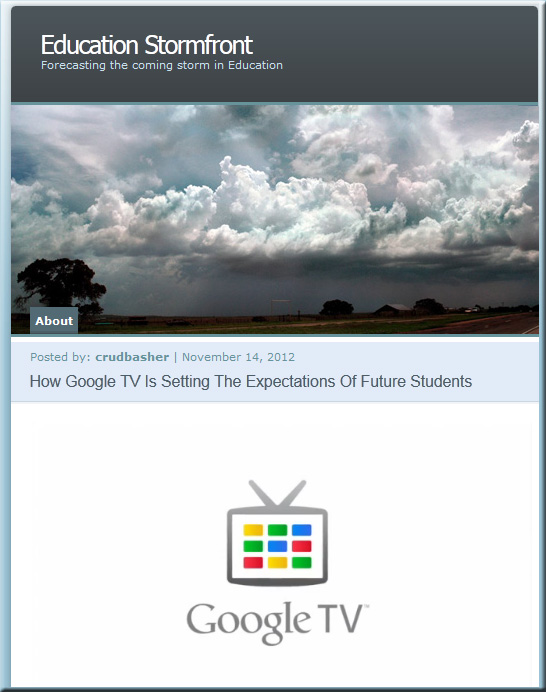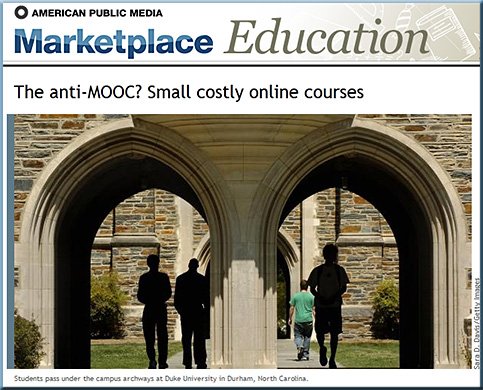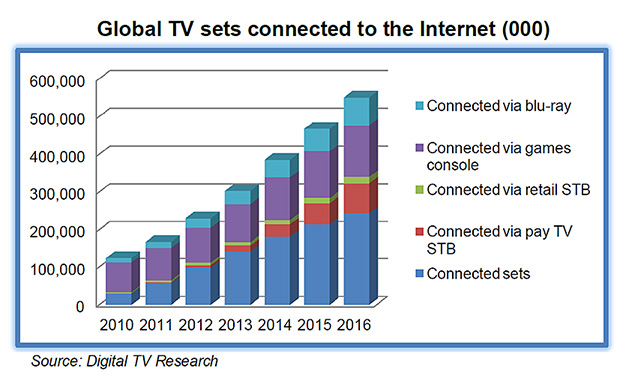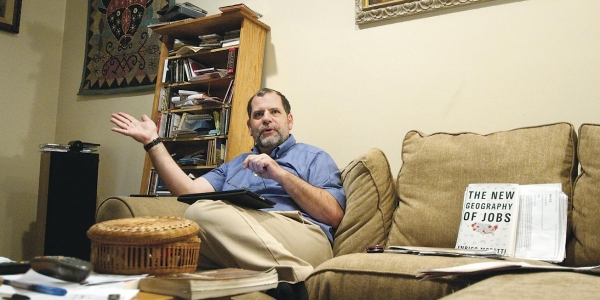Current/Future State of Higher Education — from Educause Live by George Siemens, Andy Caulkins, Malcolm Brown
Change drivers
- Globalization
- Commercial/entrepreneurial activity
- Funding cuts
- Online learning
- Unbundling of education systems
- Technology advancement (mobiles)
- Employment-oriented education
- Big data and analytics
Net Pedagogies: New Models for Teaching & Learning
- New pedagogies emerging from:
- Concerns about how well institutions are meeting their mission, on behalf of students they serve
- Pressures resulting from feeling constrained within the “Iron Triangle” of costs, access, and quality
- New technologies
- How to balance personalization with competency-based pathways
- How to build community among students who are geographically distant and proceeding at different rates (a different cohort dynamic taking place here)
- Personalized learning divisions/groups
- Innovation labs <– From DSC: This lines up nicely with my posting here
Entrepreneurship
- Deborah Quazzo, GSV Advisors
- Velocity of change
- e-books up
- 200K education apps
- 98% of students own some sort of device
- Coursera — 33 partners, 1.7 million students
- 13% of students now at for-profits
- The Bear Story
- Readiness — freshmen often needing remediation
- Completion rates
- Cost
- Career
- Venture capital and startups increasing
- What’s driving investment
- Funding issues
- Accountability
- Technology
- Consumer choice
- Waves of HE innovation
- “Traditional institutions are not standing still”
- Higher ed arms race — online program delivery (tuition-based) / MOOC (free)
- Growth in MOOC students — .51 in Fall 2011, 2.79 in Fall 2012; 447% growth rate
- Need to increase learning outcomes, access, capacity, and decrease costs
Big Data & Analytics
- Erik Duval, Simon Buckingham Shum, Caroline Haythornthwaite
- State of learning analytics
- Open analytics
- Standards
- Methods and metrics
- Impact on learner success
- Early risk detection
- Common language
- Institutional use of analytics
- Planning and deployment of LA
- Move from concept to application
- Participation wall seems to be occurring 30-40% of the time into the course
- 762 tweets, 305 links, 172 RTs, 244 Unique Twitter accounts
Leadership in Education
- James Hilton
- Characterizing change
- Not a linear system often times; instead, an emergent change; not always orderly and linear
- Unknown end point
- Adjust as you go
- Adjust fundamental conditions
- 2 fundamental forces in HE
- Commoditization
- Unbundling
- “Find your North Star”
- George Mehaffy
- Challenge and change article
- Massive change and great uncertainty
- Technology changes everything
- Traditional institutions loss of control
- Students abilities to interact and learn without mediating
- “Outsiders” becoming players
- Venture capital
- Models of college changing
- Course models
- Data analytics
- Cost discrepancies
- Measuring success
- Loss of credentialing monopoly
- Leadership vacuum
- Change is rapid, profound, emergent
- We need to rethink HE leadership model
- We need to rethink HE in many fundamental dimensions
- Now is the time for bold, imaginative, entrepreneurial leadership
Distributed Research
- Traditional methods of sharing research, established centuries ago
- Need to re-imagine those methods and generate higher, faster, better outcomes from research
- Challenges: pace, dissemination, incentive to collaborate
- Opportunities: immediacy, openness, new/richer tools and indicators, unprecedented progress
Still some challenges in offering a MOOC-based course:
- Skillset development
- Getting participants orientated to the course
- Technological glitches
.
Other resources/links:
- How to Succeed in a Massive Online Open Course (MOOC) — from learningsolutionsmag.com by Apostolos Koutropoulos & Rebecca J. Hogue
- Mindmap of course — from Claudia Scholz
- NextGenLearning.org
- Mark Hahnel — figshare.org — research
- altmetrics.org/manifesto











![The-Living-Class-Room-Daniel-S-Christian---July-2012 The Living [Class] Room -- by Daniel Christian -- July 2012 -- a second device used in conjunction with a Smart/Connected TV](http://danielschristian.com/learning-ecosystems/wp-content/uploads/2012/07/The-Living-Class-Room-Daniel-S-Christian-July-2012.jpg)








